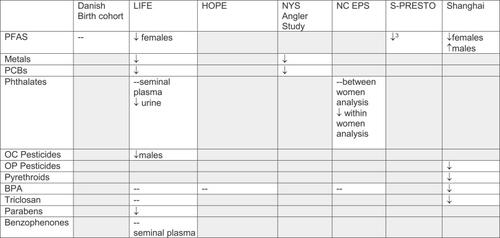当前位置:
X-MOL 学术
›
Reprod. Toxicol.
›
论文详情
Our official English website, www.x-mol.net, welcomes your feedback! (Note: you will need to create a separate account there.)
Assessing preconception exposure to environmental chemicals and fecundity: Strategies, challenges, and research priorities
Reproductive Toxicology ( IF 3.3 ) Pub Date : 2024-03-22 , DOI: 10.1016/j.reprotox.2024.108578 Jillian Ashley-Martin , Jacob Hammond , Maria P. Velez
Reproductive Toxicology ( IF 3.3 ) Pub Date : 2024-03-22 , DOI: 10.1016/j.reprotox.2024.108578 Jillian Ashley-Martin , Jacob Hammond , Maria P. Velez

|
In 2022, approximately one out of six people globally experienced infertility at some point in their life. Environmental chemicals, particularly those with endocrine disrupting activity, may contribute to impaired fecundity and infertility. We review existing prospective cohort studies of environmental chemicals and fecundity, identify methodological challenges and biases, and outline future research priorities. Studies of preconception environmental chemical exposures and fecundity have occurred in US, Singapore, China and Denmark with recruitment as early as 1982–1986, as recent as 2015–2017 and sample sizes ranging from 99 to 936. Higher exposure to certain chemicals (e.g. heavy metals, perfluoroalkyl substances) was associated with longer time to pregnancy; yet the literature is scarce or nonexistent for many chemicals. Furthermore, prospective studies face challenges and potential biases related to recruiting participants prior to conception, measuring environmental chemicals during critical windows of exposure, and ascertaining when pregnancy occurred. Research priorities include expanding the scope of biomonitoring data collected during the preconception period, continuing to develop and validate analytic methods for self-sampled biospecimens in traditional and novel matrices, collecting data in male partners and investigating etiologic associations according to indicators of marginalization.
更新日期:2024-03-22



























 京公网安备 11010802027423号
京公网安备 11010802027423号